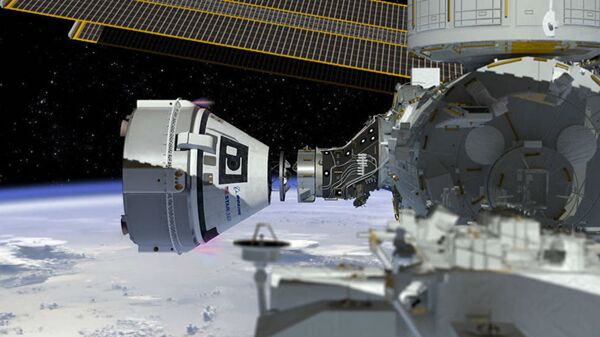Boeing is buying Russian-made power converters for its new Starliner manned capsule programme, the company’s space division has confirmed.
Earlier, Roscosmos Chief Dmitry Rogozin said he was “surprised” after finding out that a private company in Voronezh, a city about 465 km south of Moscow, was producing parts for the Starliner programme.
Responding to a question on the matter by Reuters space reporter Joey Roulette, Boeing Space confirmed that “#Starliner uses a Power Converter Unit provided by Zao Orbita in Voronezh, Russia.”
You're right, Joey. And we comply with those contract requirements. #Starliner uses a Power Converter Unit provided by Zao Orbita in Voronezh, Russia. It allows us to transfer power from @Space_Station to Starliner while docked.
— Boeing Space (@BoeingSpace) February 21, 2020
The component is said to allow power to be transferred from the ISS to Starliner during docking, an described as a part with a proven track record of 20 years of use aboard the ISS. “It was reduced in mass and size to fit the needs of #Starliner and chosen for its mission assurance and customer reliability,” Boeing Space clarified.
It's a flight-proven component used for 20 years on @Space_Station. It was reduced in mass and size to fit the needs of #Starliner and chosen for its mission assurance and customer reliability.
— Boeing Space (@BoeingSpace) February 21, 2020
In development since 2010, the Boeing Starliner is a $4.2 billion next-gen crew capsule with a capacity of up to 7 astronauts, a free-flight operating capability of up to 60 hours, and the ability to remain docked in orbit for up to 210 days. It is designed to be launched by Atlas V non-reusable rockets, which use Russian-made RD-180 engines developed by NPO Energomash.
Boeing is in a race with SpaceX and its Crew Dragon to develop the next capsule to take Western astronauts to the ISS. SpaceX plans to make the first manned flight of the Crew Dragon in the second quarter of 2020, and has its own $2.6 billion crew capsule contract with NASA.
The Starliner set off on its first test flight to the ISS in December, but docking was canceled after it failed to execute an orbit-insertion burn on time due to a glitch in its software. Earlier this month, NASA revealed that the capsule could have collided with a service module designed to separate in orbit due to a second glitch. Starliner landed safely in New Mexico on December 22.
Created in the immediate aftermath of WWII as Electrical Repair Plant No.17, Orbita was reorganized for work in the space sector at the dawn of the space age, developing multiple critical components for the Soviet space programme, including the unified power supply system for the Mir space station prior to its launch in 1986, and a unique turbogenerator power supply system for the Energiya-Buran Soviet space shuttle. The company has been part of the ISS project since its inception in 1996, creating and manufacturing devices for the station's power supply system. Orbita signed a contract with Boeing to create a custom power converter unit for the Starliner in 2013.


